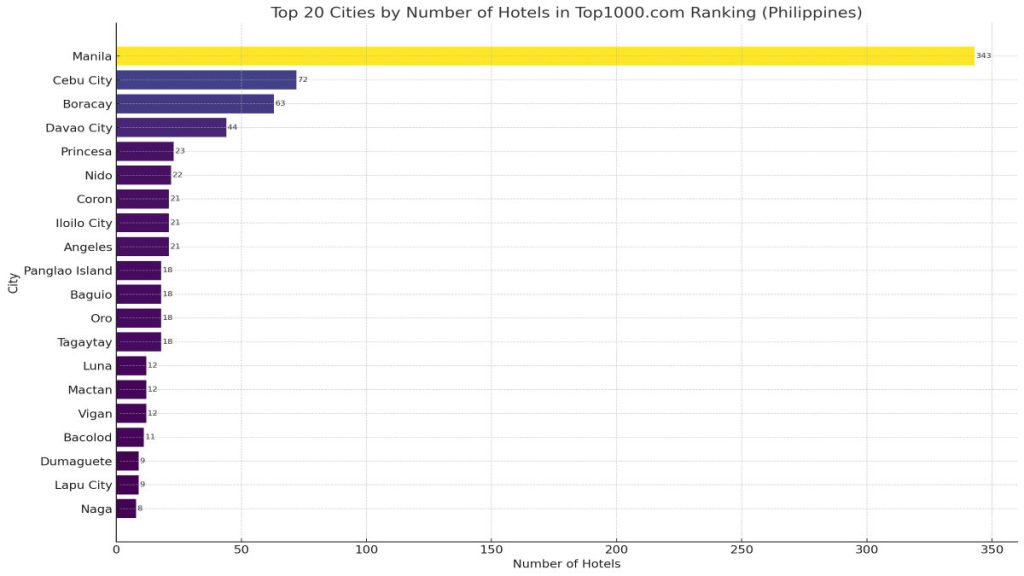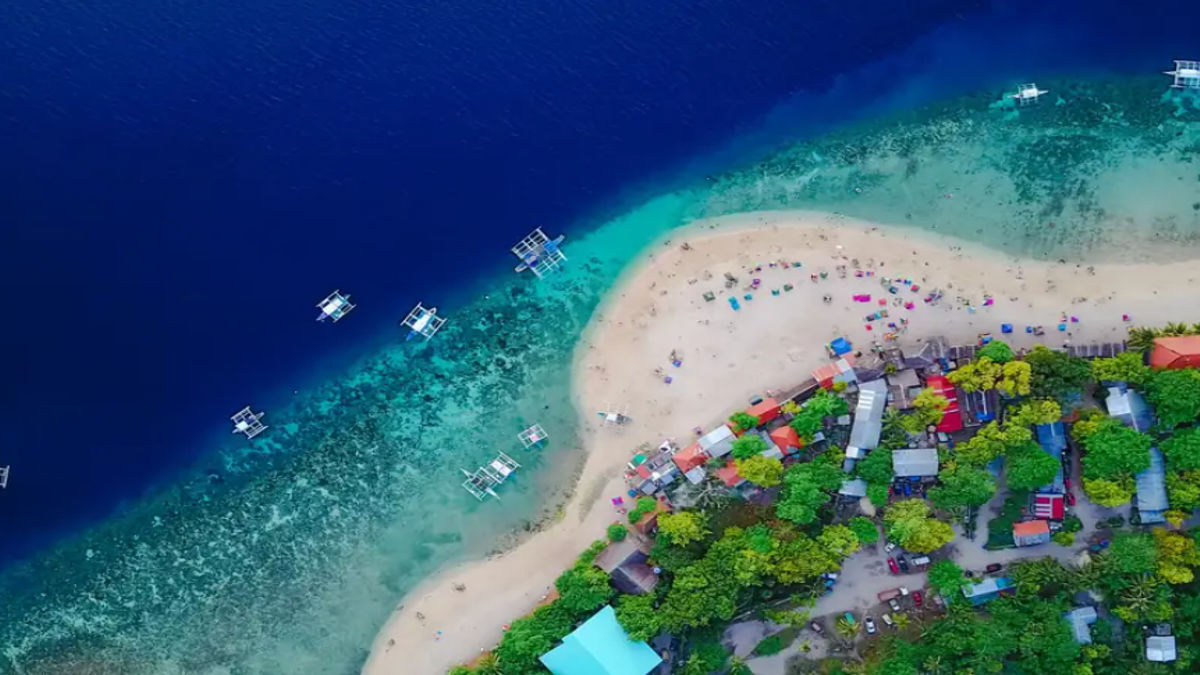The Philippines is one of the most captivating destinations in Asia. With more than 7,000 islands, it offers everything from powder-white beaches and turquoise lagoons to volcanic landscapes and vibrant cities. Tourism is growing rapidly, and hotels and accommodations play a crucial role in shaping how visitors experience the archipelago.
Top1000.com has published an independent ranking of hotels across the Philippines. Unlike traditional star ratings, it focuses on real online popularity, reflecting which properties travelers actively search for and engage with. The findings are presented in Top1000.com’s overview of the Philippines’ most visited hotels, which highlights the accommodations attracting the most attention nationwide.
Important Note on the Philippine Context
Unlike more mature tourism markets such as Australia or Europe, the hotel landscape in the Philippines reflects a different stage of development. There are fewer large international chains and far more independent options: villas, apartments, family-run resorts, and boutique hotels.
This does not make them less significant. On the contrary, the essence of the Top1000.com approach is that what matters is what travelers choose in real life. Hundreds and thousands of guests book these smaller properties, rate them positively, and spread the word online. Their popularity is not defined by brand size but by guest satisfaction and visibility. That is exactly why many independent accommodations appear prominently in the ranking.
Hotels Across the Philippines
Metro Manila (gateway to the islands)
The capital region is where many international visitors arrive. Large business hotels dominate Makati, Bonifacio Global City, and Ortigas, catering to conferences and corporate travelers. But boutique hotels and serviced apartments are also thriving, serving long-stay expats and digital nomads.
Cebu and the Visayas
Cebu is both a business hub and a tourism magnet. High-rise hotels near Cebu City host business conferences, while Mactan Island resorts offer beachfront escapes. The wider Visayas region (Bohol, Boracay, Negros) is filled with independent beach resorts and boutique villas.
Boracay
Perhaps the most famous beach destination in the Philippines, Boracay was once overloaded with development but has since been rehabilitated. Its White Beach is lined with boutique resorts, family-owned hotels, and a handful of luxury chains. Popularity is determined as much by social media visibility as by size.
Palawan (El Nido, Coron, Puerto Princesa)
Palawan consistently ranks among the world’s most beautiful islands. Eco-resorts, diving lodges, and sustainable boutique hotels dominate. The absence of large chains highlights the independent spirit of Philippine tourism.
Mindanao and Davao
Davao and surrounding areas attract both business travelers and adventure seekers. Hotels here are fewer but growing in visibility.
Northern Luzon (Baguio, Banaue, La Union)
These regions cater to domestic travelers seeking mountain escapes, surfing beaches, and cultural experiences. Family-run hotels and lodges are the norm.
Insights from the Ranking
The Top1000.com’s overview of the Philippines’ most visited hotels reveals several unique trends:
- Independent properties dominate: Villas, apartments, and boutique hotels form a significant portion of the list.
- Local chains are strong: Groups like Seda Hotels, Discovery Hospitality, and Astoria have built recognition across the islands.
- Luxury has a niche role: Some international names (Shangri-La, Marriott, Hyatt) appear, but they are far fewer compared to Western markets.
- Tourist hotspots shine: Boracay, Palawan, and Cebu properties attract high digital traffic.
- Digital storytelling matters: Many hotels achieve visibility by leveraging social media, guest reviews, and online travel platforms.

Digital Presence vs. Traditional Luxury
In the Philippines, the ranking makes one thing clear: size and brand recognition are less important than engagement. A small beachfront villa with strong guest feedback can attract more attention than a five-star chain hotel.
Digital marketing, Instagram visibility, and active management of booking platforms are often decisive factors. This reflects a global trend, but it is even more visible in the Philippines, where independent hotels dominate.
Hotels and the Economy
Tourism is one of the Philippines’ most dynamic industries, contributing significantly to GDP and local employment. Hotels play multiple roles:
- Employment: Resorts and apartments provide jobs in hospitality, food service, and maintenance.
- Regional development: Small hotels sustain communities in Boracay, Palawan, and beyond.
- Business travel: Manila and Cebu host conferences and corporate events, requiring large business hotels.
- Cultural integration: Boutique hotels often highlight Filipino traditions, cuisine, and architecture.
The success of independent accommodations reflects the entrepreneurial spirit of Filipino communities.
Future Trends in Philippine Hospitality
- Sustainable tourism — Palawan and Siargao are leading with eco-resorts and environmental policies.
- Digital influence — Hotels that manage reviews, social media, and direct booking well will rise faster.
- Domestic tourism — A growing middle class supports year-round demand, even outside peak international seasons.
- Hybrid stays — Serviced apartments and co-living spaces appeal to digital nomads and long-stay guests.
Why the Top1000.com Ranking Matters
For the Philippines, this ranking is more than a list of names. It proves that popularity is not reserved for global brands. Independent villas, small hotels, and family-run resorts can compete equally if they win the trust and attention of travelers.
For travelers, it is a trustworthy guide to where people actually stay. For hotel owners, it is recognition that digital reputation now carries as much weight as traditional luxury.
Methodology (brief)
The ranking is based on clear principles:
- Popularity by traffic — only visits to each hotel’s main website count.
- No judgment of quality or licenses — inclusion means visibility, not endorsement.
- No artificial redirects — only genuine engagement is measured.
It is a transparent way to show which accommodations are shaping Philippine tourism today.

